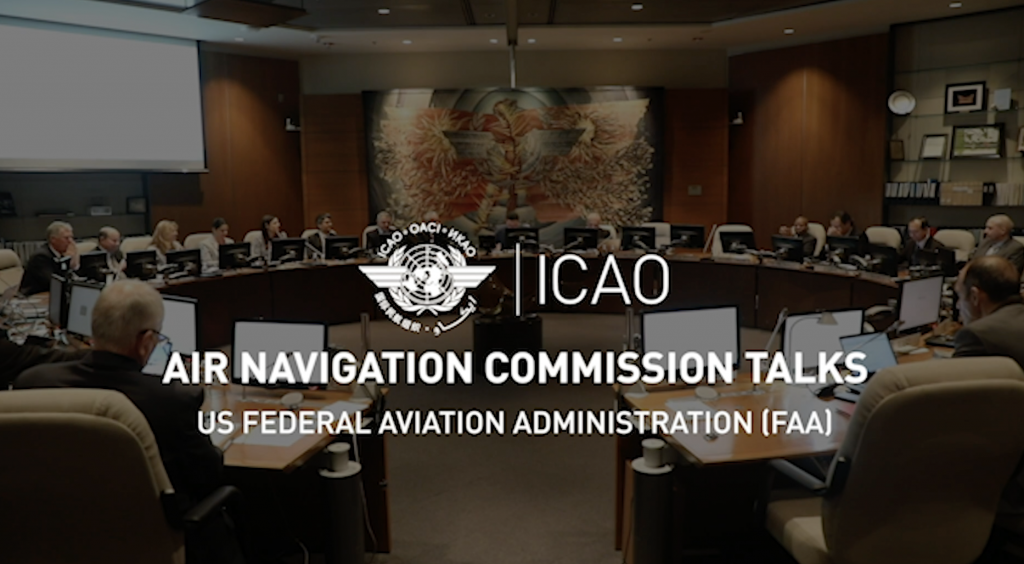On Monday, September 28th, the ANC Talk Series welcomed representatives of the FAA to discuss the following topics:
- Alternatives to AFFF research;
- UAS – Airport applications and Section 383 Detect and mitigate;
- Vertiports;
- Solar Lighting for Airports;
- Geosynthetics for Airfield Pavements research;
- Light Fixture Bolts Research;
- Friction and Aircraft Braking; and
- Standards that ensure worldwide harmonization and global interoperability
The ANC Talk was opened by Nabil Naoumi, the President of the ANC and Mike Brown, the FAA Senior Representative to ICAO. Two presenters, Murphy Flynn and Khalil Kodsi, were introduced, along with the focus of the session: Standards, as per the ICAO Annex 14 — Aerodromes, Volume I — Aerodrome Design and Operations and Volume II — Heliports.
Murphy Flynn opened the presentation with a look at the William J. Hughes Technical Center. The national aviation facilities experiment centre, formerly NASAC (Naval Air Station, AC) that has been in operation for more than 60 years established in 1958 and a month later the FAA was established. The technical centre is a unique national asset with 4,500 employees, a campus of 5,059 acres comprised of 250+ buildings and laboratory space of 460,000 sq ft.
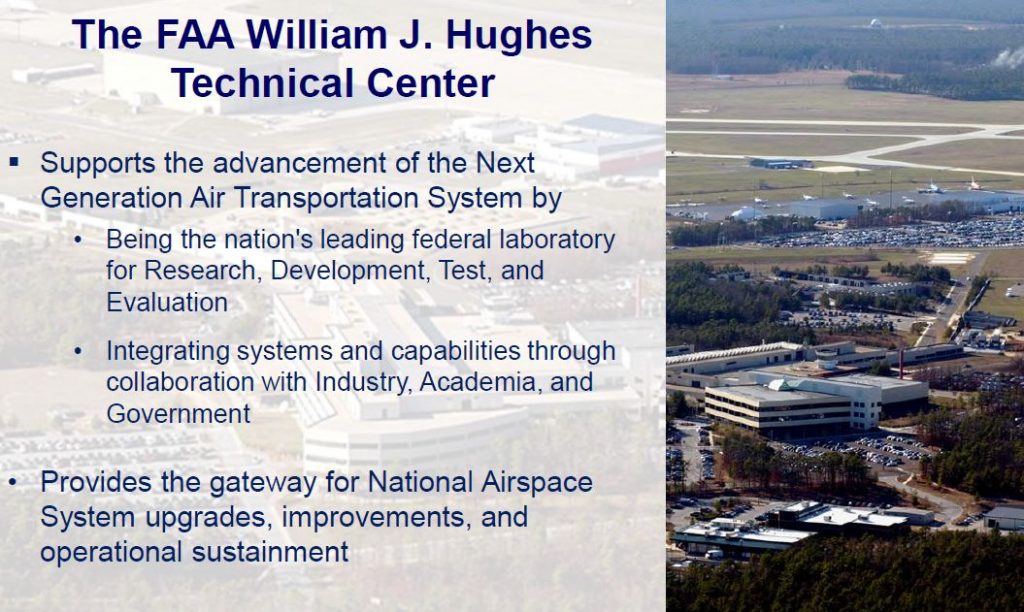
The Technical Center multiple FAA Missions include the Concept development and validation, modelling and simulation, engineering/programme management, operations support, safety, flight inspection, Atlantic City International Airport (ACY) Tower, Area Control Management (ACM), and at its core is the research and development, test and evaluation, Laboratories and centre of operations.
The William J. Hughes Technical Center Partners, include the 177th Fighter Wing NJ Air National Guard, the United States Coast Guard Air Station AC, the Transportation Security Laboratory, Federal Air Marshall Service, Atlantic City International Airport, the South Jersey Transportation Authority (SJTA), and Stockton Aviation Research Park.
National Airport Pavement Test Facility (NAPTF)
- The NAPTF is a partnership between FAA and Boeing that opened in April 1999 in a fully enclosed facility that allows for testing of accelerated traffic pavement surfaces, full-scale pavement structures and landing gear loads.
- A national airport pavement test vehicle (NAPTV) is fully automated with programmed wander patterns, for up to 5-dual wheel configuration, roughly 1.3 Million lbs (589 metric tonnes) and up to 75,000 lbs (34 metric tonnes) per wheel.
- The goal of the Geosynthetic Programme is to research geosynthetic applications within the pavement structure for the long-term benefit of airport pavement design and construction.
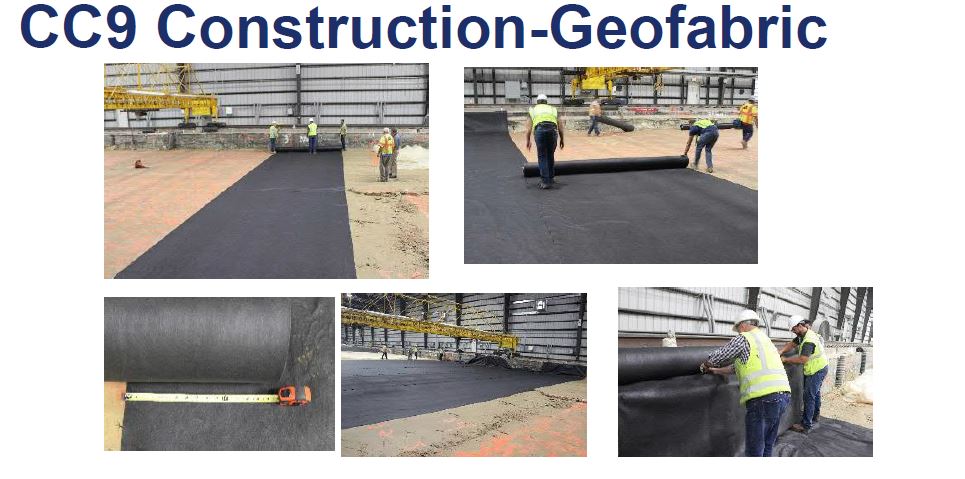
The Geosynthetics Programme completed a two-phase 1 Cyclic Plate Load study (Phase I: Geogrid, Phase II: Geosynthetics) with the U.S. Army Corps of Engineers at Vicksburg MS.
The objectives were to verify/refine/modify the fatigue model based on the ratio of dissipated energy change (RDEC); the effect of P-209 layer thickness on pavement life; the effect of geosynthetics use on flexible pavement performance – with trafficking to begin October 2020, and the cement-treated permeable base performance and the Strain Criterion for Allowable Overload.
The expected outcomes will be to capture benefit(s) of the geosynthetics under-aircraft loading; the benefit goal is to extend pavement life, potential to reduce pavement thickness, alternative cost-effective subgrade improvement and/or use of lower-quality materials. The refine the optimal location of Geosynthetic, reinforcement within the airport pavement structure. To modify the FAA pavement design procedure and performance models as applicable.
Light Fixture Bolts Research
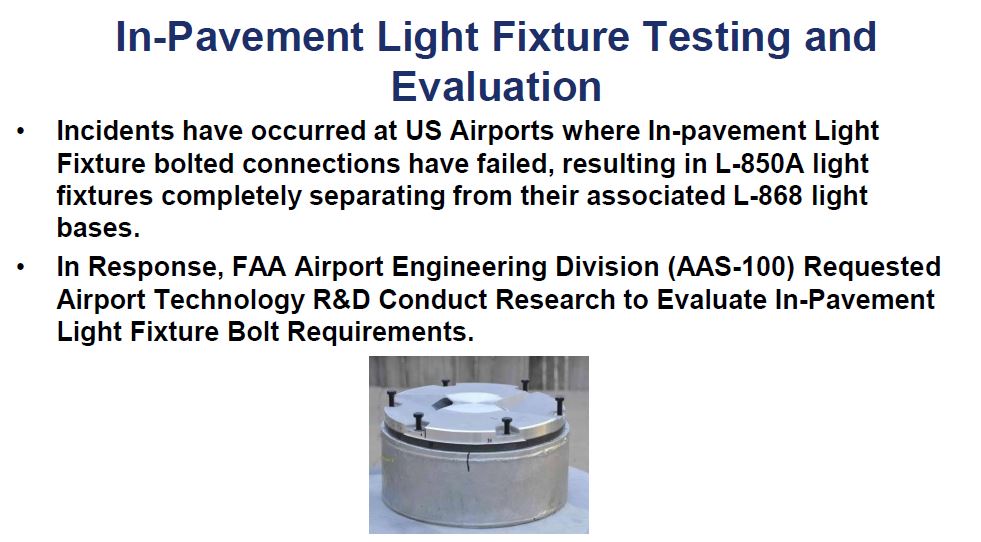
The subject instrumented light fixtures to controlled trafficking, utilizing the NAPTV, with incrementally increasing levels of wheel loading. To assess the effects of incrementally increasing levels of wheel loading on the test items concerning the ultimate failure of the In-Pavement Light Fixture Assemblies. The four In-Pavement light fixture assembly test the configurations, having Varying Spacer Ring Heights and Extensions, were identified and constructed. Heavyweight deflectometer (HWD) testing was conducted for static loading; in-motion (trafficking) loading, with the NAPTV used to apply this.
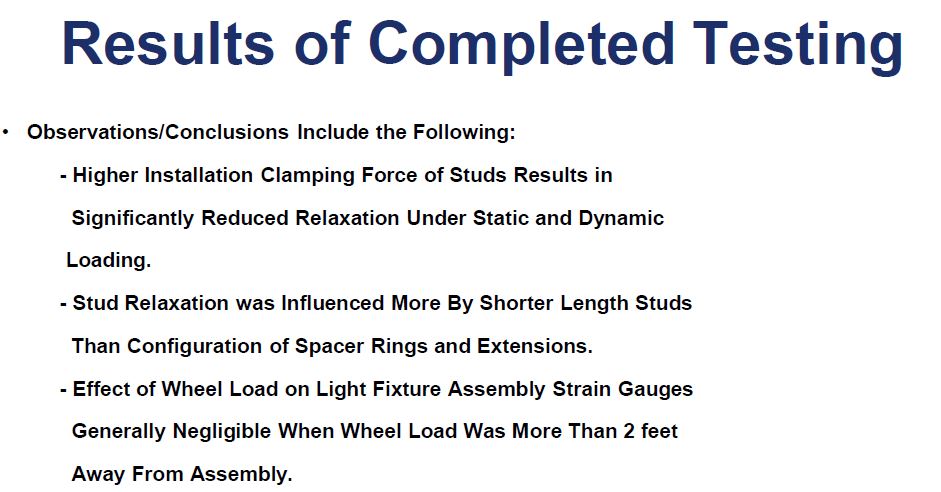
The objectives of future testing involve determining the amount of clamping force typically lost after tightening airfield lighting fixture bolts for the first time and following subsequent tightening. Further testing will determine bolt relaxation for coated carbon steel bolts versus lubricated stainless steel bolts, coatings that can be applied to the spacer rings for increasing the static friction between the bolted connection faying surfaces, and test procedures for evaluating the effectiveness4 of the coatings for resisting joint slippage.
The benefits of the research included the FAA Engineering Brief 83A, published in December 2018, provides information and guidance for standard methods to be employed when using stainless steel or coated carbon steel bolts to secure light fixtures to L-868 light bases. The future testing intended to further refine criteria for selection, installation, and the maintenance of In-Pavement Light Fixture Bolts.
Friction and Aircraft Braking
Historically the consistency of runway friction measurement (Mu) across the Continuous Friction Measuring Equipment (CFME) has been inadequate. The use of CFMEs has been reduced to monitoring “trending” values in contaminated conditions and different trigger values, based on vendor, for maintenance. The FAA Airport Engineering Division (AAS-100) requested Airport Technology R&D to research to evaluate the feasibility of using the smart tire concept to verify the accuracy of CFME friction (Mu) readings. The Smart Tire Concept intended to eliminate the variable of Torsional Deflection in the CFME Friction Tire.
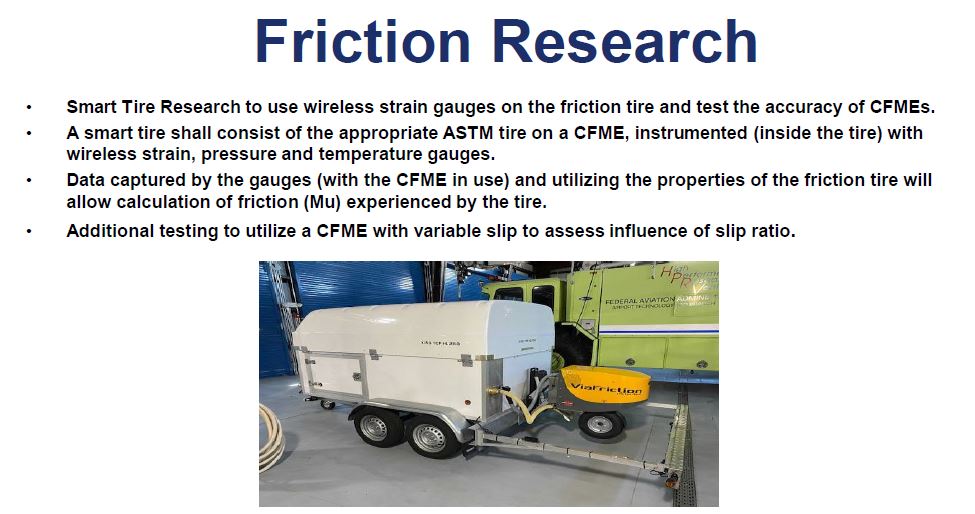
The expected benefits of the research were:
- To determine the feasibility of the use of a smart tire to verify the accuracy of CFME readings.
- To assess possible adjustments that could be made to CFMEs to match mu calculated by the smart tire.
- To enable standardization of friction (Mu) readings for all types of CFMEs.
The FAA Aircraft Braking Friction research initiated in response to the National Transportation Safety Board (NTSB), issued safety Recommendations, the Big Data Analytics/Machine Learning and the Controlled Condition Brake Testing.
The Expected Benefits of the research included determining whether big data analytics/machine learning can be an effective tool in evaluating braking friction encountered by aircraft during landings on wetted and contaminated runways. The Statistical models developed by big data analytics/machine learning to be validated by controlled condition brake testing and aircraft braking performance assessed under wetted runway conditions with varying water film thicknesses.
Solar Lighting for General Aviation Airports
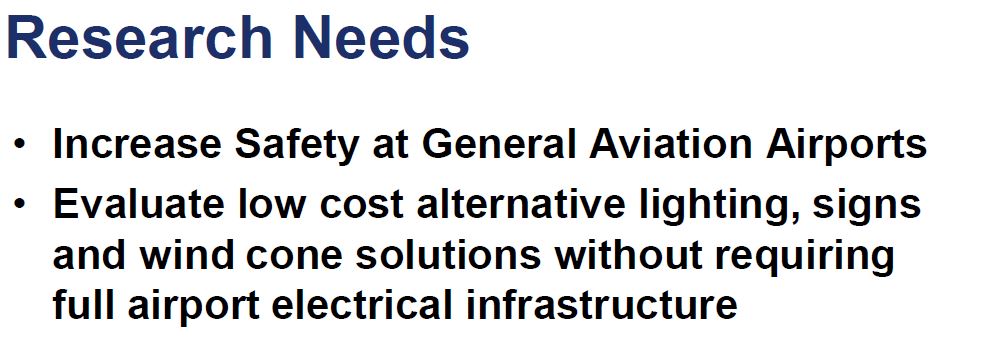
The evaluation of solar lighting systems for airports, the FAA Airport Engineering Division (AAS-100) requested ATRD to research to evaluate solar lighting systems at five general aviation (GA) airports in diverse geographic regions based on varied solar insolation, ambient temperature range and snowfall. The geographic regions selected in the United States include New Jersey, Upstate New York, Central Arizona, Washington State and Central Oklahoma. The Cape May Airport (WWD) in New Jersey is the Initial Proof-of-Concept GA Airport Site.
The expected benefits of the research were to determine the viability of the utilizing solar-powered light fixtures and the signs in the geographically diverse GA airport environments, based on the results of testing to potentially develop an FAA engineering brief, including requirements for solar-powered devices in GA airport environments.
Aqueous film forming foam (AFFF) Replacement
The research plan outlining research and development efforts of gap analysis, the literature review, the live-fire product testing and the chemical analysis. The Broad Agency Announcement (BAA), posted on 5 December 2019, watched for potential foam manufacturers and other industry partners to collaborate on the research. There were six White Papers received and resulted in potentially awarding three agreements.
The ARFF Fire Test Facility was preliminary design scoping document for new test facility in 2014 and toured the fire labs at the Naval Research Laboratory (NRL), the National Institute of Standards and Technology (NIST), the Bureau of Alcohol, Tobacco, Firearms and Explosives (ATF) and the Consumer Product Safety Commission (CPSC) in 2015. The lessons learned from facility tours provided key design inputs. The construction contract was awarded in 2018 and completed in 2019.
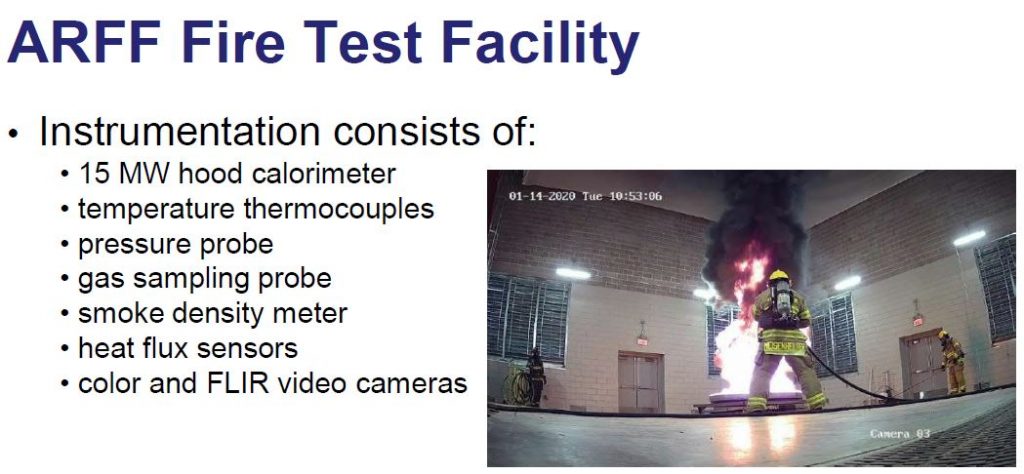
The instrumentation consists of 15 MW hood calorimeter, temperature thermocouples, pressure probe, gas-sampling probe, smoke density meter, heat flux sensors, and colour and FLIR video cameras.
Vertiport Design Standards Research for Advanced Air Mobility
The research Scope is to investigate vertical takeoff and landing (VTOL) aircraft technologies and determine the maturity of each technology; to evaluate the performance and characteristics of VTOL aircraft to help the FAA’s Airport Engineering Division (AAS-100) develop vertiport design Standards and Guidance. The research will focus on VTOL aircraft that are <7000 lbs. and <9 passengers. The larger VTOL aircraft will be considered but will not be the focus.
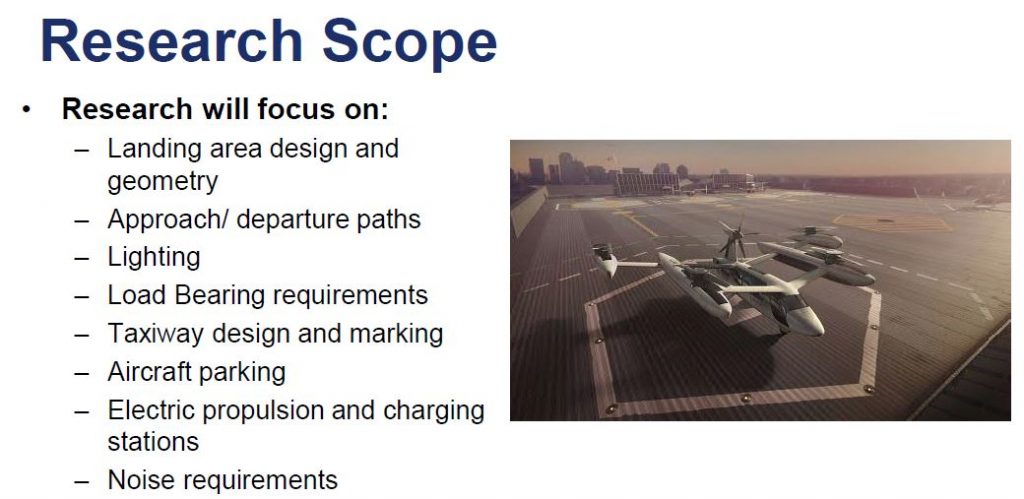
The Research Path is Industry Request for Information (RFI); NASA National Campaign (formerly Grand Challenge) and the division Broad Agency Announcement (BAA).
The upcoming research steps are the literature review and gap analysis of existing regulations; the conceptual testing and simulations; the operational testing at the Technical Center; the expected research
Completion is aimed at the end of 2023.
Unmanned Aircraft Systems (UAS) Detection and Mitigation, UAS for Airport Applications:
UAS Detection and Mitigation are described in Section 383 of the FAA Reauthorization Act of 2018, requires the FAA to …, ensure any UAS detection and mitigation systems do not adversely impact or interfere with…the safe and efficient operation of the National Airspace System (NAS). Section 383(b) requires the FAA to develop a plan for NAS-wide certification, permitting, authorizing or allowing of UAS detection and mitigation systems. Section 383(c)-(d) requires the FAA to test and evaluate technologies or systems that detect and mitigate risks posed by UAS at five airports and Section 383(b) requires the FAA to develop a plan for NAS-wide certification, permitting, authorizing or allowing of UAS detection and mitigation systems.
The FAA Reauthorization Plan further, includes the Section 383 Working Group has agreed to a phased implementation approach that may involve some overlapping work.
There are five phases:
- Phase 1: Test and evaluate UAS detection and mitigation systems at the Atlantic City International Airport (ACY) collocated with FAA’s William J. Hughes Technical Center and four additional airports. ARP is leading this effort called “The Airport UAS Detection and Mitigation Research Program”.
- Phase 2: Convene an Aviation Rulemaking Committee (ARC) to make recommendations for the plan in Phase 3. The ASH (security and hazardous materials safety) is leading this effort.
- Phase 3: Develop a plan for NAS-wide certification, permitting, authorizing or allowing of detection and mitigation systems, which could include the development of performance standards. Determine how this plan can and should apply to UAS detection and mitigation systems to be used outside of the airport environment, but nonetheless potentially affects the National Airspace System (NAS).
- Phase 4: Develop additional policies identified as necessary in the NAS-wide plan for certification, permitting, authorizing or allowing of detection and Counter Unmanned Aircraft Systems (CUAS), which may necessitate rulemaking and/or additional legislative proposals, as well as Airport Improvement Program (AIP) funding eligibility requirements.
- Phase 5: Implement the plan and associated rules and policies for NAS-wide certification, permitting, authorizing or allowing of detection and C-UAS systems, AIP funding eligibility, and additional policies identified as necessary.
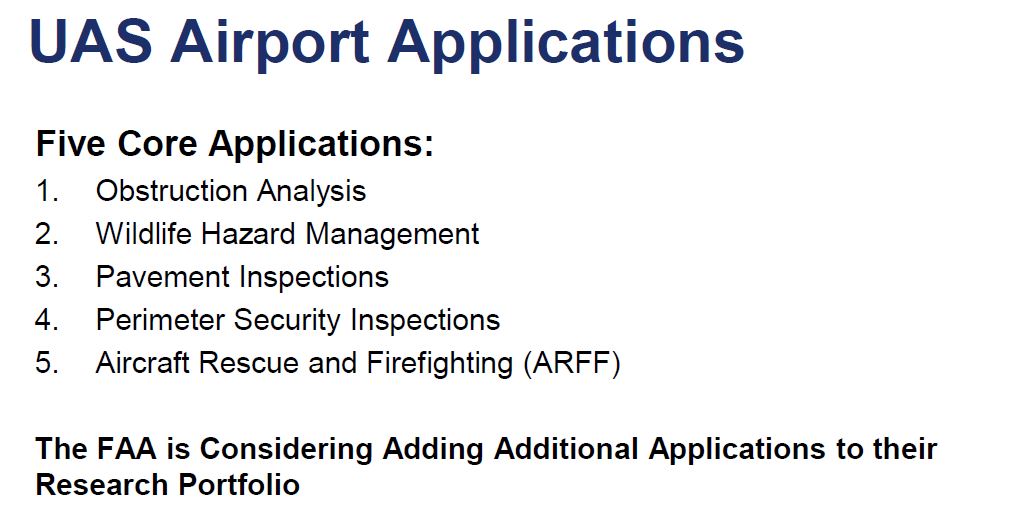
The presentations shared throughout the ANC Talk were thought-provoking and well-received. Many questions were answered, with more to come. Ideally, a trip to the centre will be planned in the future! When the session concluded, the FAA participated in further discussions that are shared in the below link:
